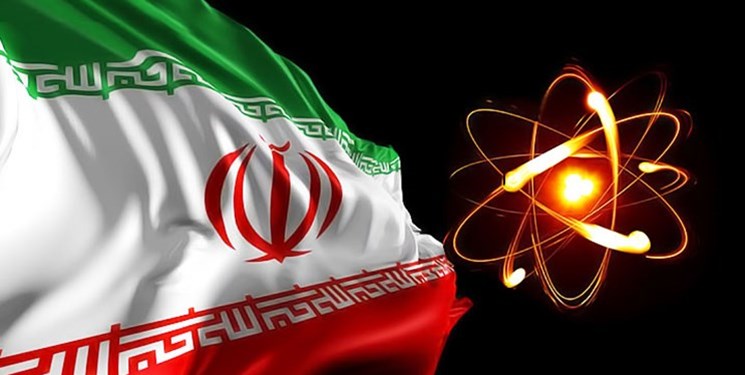As the eighth round of nuclear talks between Iran and world powers unfolds in Vienna, some observers have accurately noted that attempts to revive the 2015 Joint Comprehensive Plan of Action (JCPOA) are devoid of any linkage to Iran’s regional malign activity.
Yet this separation of the two issues – Iran’s nuclear program and its destructive regional agenda – is, in fact, a good thing. Unlike many other regional security threats, Iran’s nuclear program could become an existential threat to the State of Israel, and that means that it is always the number one priority on Israel’s security agenda.
It is clear that Iran’s highly skilled negotiators would demand additional concessions on the nuclear agreement in any hypothetical attempt to place limitations on Tehran’s regional destabilizing activity. It would therefore be wrong for any compromise to be reached on the nuclear deal in favor of limitations on Iran’s regional program, and it is therefore in Israel’s interest to keep them separate at the negotiations table in Vienna.
As it is, the signs emanating from Vienna are not encouraging over the prospects of reaching a strong nuclear deal. Instead, the most likely scenario is a revival of the 2015 deal, and its troubling sunset clauses, all of which expire between 2025 and 2031. This would enable the Islamic Republic to produce advanced centrifuges and enrich uranium without limitation by the time the sunset clauses expire, paving the path for Iran to become a nuclear threshold state, with full international legitimacy and full access to the global economy, in little time. The extent of inspections in the future agreement also does not look very promising.
As a result, any attempt to create a ‘package deal’ that would also place limitations on Iran’s proliferation of weapons to its proxies throughout the region and its construction of heavily armed terror armies that threaten Israel and moderate Sunni countries is a non-starter, as this would weaken what is shaping up to be an already disturbingly weak agreement.
Iran is a little under 1.5 years away from being able to build a nuclear weapon (a more complex task than only enriching sufficient amounts of uranium for a bomb).
Between 2000 to 2003, Iran worked extensively on its nuclear program, which was called the Amad program at the time. After suspending the program in response to the U.S. invasion of Iraq and fears that it too would be targeted, Iran resumed its nuclear program, using a plethora of cover stories to develop the relevant technology.
This project was led by Iran’s chief nuclear scientist, Mohsen Fakhrizadeh, until his assassination on Iranian soil in November 2020.

Since the Trump administration quit the nuclear deal in 2018, Iran has focused on gradually restarting uranium enrichment and centrifuge production, though its progress on other key components of the nuclear program, like building an explosive mechanism, miniaturizing it, and learning how to place it on a missile as an operational warhead, appear to be largely frozen.
Had Iran broken through to the final stage of nuclear weapons production, pushing forward in all relevant departments, clear signs would likely have emerged to the world, such as preparations for an underground nuclear test. Iran knows that such a development would provoke a strong backlash against it, including the risk of military action – most likely by Israel – so it has so far refrained from taking the final steps to complete the program.
Still, Iran maintains all of the technological knowledge and personnel needed to cross the nuclear threshold in the future.
Should that threshold ever be crossed, other countries in the region will undoubtedly decide to seek their own nuclear capability, and within a few decades, we will find ourselves in a nuclear Middle East. That scenario can only spell extremely negative news for the world.
While it would be wrong to link Iran’s nuclear program and regional activities together in a nuclear agreement, viewing the two issues as being interlinked in the real world is certainly an accurate and comprehensive way of understanding Iran.
Iran is not only a nuclear program; it is also the mother ship of a radical Shi’ite axis, including Hezbollah in Lebanon and Syria, Shi’ite militias in Syria and Iraq, the Houthis in Yemen, and even Sunni allies like Hamas and Palestinian Islamic Jihad in Gaza. Eventually, Iran wishes to protect these proxies and partners with a nuclear umbrella, and encourage them to step up their violent wars of attrition against Israel and pro-American Sunni states.
Thus, Iran’s dangerous regional conduct must be restrained, without any connection to the nuclear deal.
As the catalyst of the Shi’ite axis, which it nourishes with air, land, and sea lines of communication, proliferating money and capabilities throughout the region, Iran is exporting its Islamic revolution and its vision of destroying Israel.
Almost all of the major negative dynamics in the Middle East can be traced back to Iran today, whether this involves its nuclear program, or its domination of Lebanon, Syria, Iraq, Yemen, and its influence on the Gaza Strip.
For Israel, Syria is the focal point of the Iranian – Shi’ite axis, the area where the most intense part of the preventative, grey zone campaign to roll back Iran is currently raging.
Jerusalem needs to be prepared for a multi-front war, with a special emphasis on the Lebanese arena, where Hezbollah has amassed an arsenal of some 150,000 rockets and missiles – more firepower than most NATO armies possess.
As time goes by, Israel and Iran appear to be increasingly moving towards a direct collision course, as the strategic competition between these two regional powers grows in intensity.
One reflection of this trend is the establishment in 2020 of the Strategy and Third Circle [Iran] Directorate in the IDF. This directorate shapes the IDF’s force build-up program, while also housing a newly opened Iran division, which resides in IDF central Headquarters in Tel Aviv.

The Iran division is filled with dozens of people – soon to be over a hundred, who get up in the morning and think about the IDF’s strategy and operations regarding Iran in the short, medium, and long-term time frames.
The IDF is having to learn how to coordinate its various parts to deal with Iran since Iran is not enclosed in Iranian borders. That means that the IDF’s Northern Command, for example, must coordinate with the Iran Division when they both encounter Iranian activities in the Syrian arena.
As the Vienna talks drag on, Israel is preparing for a long-term struggle against the Islamic Republic across the Middle East.






